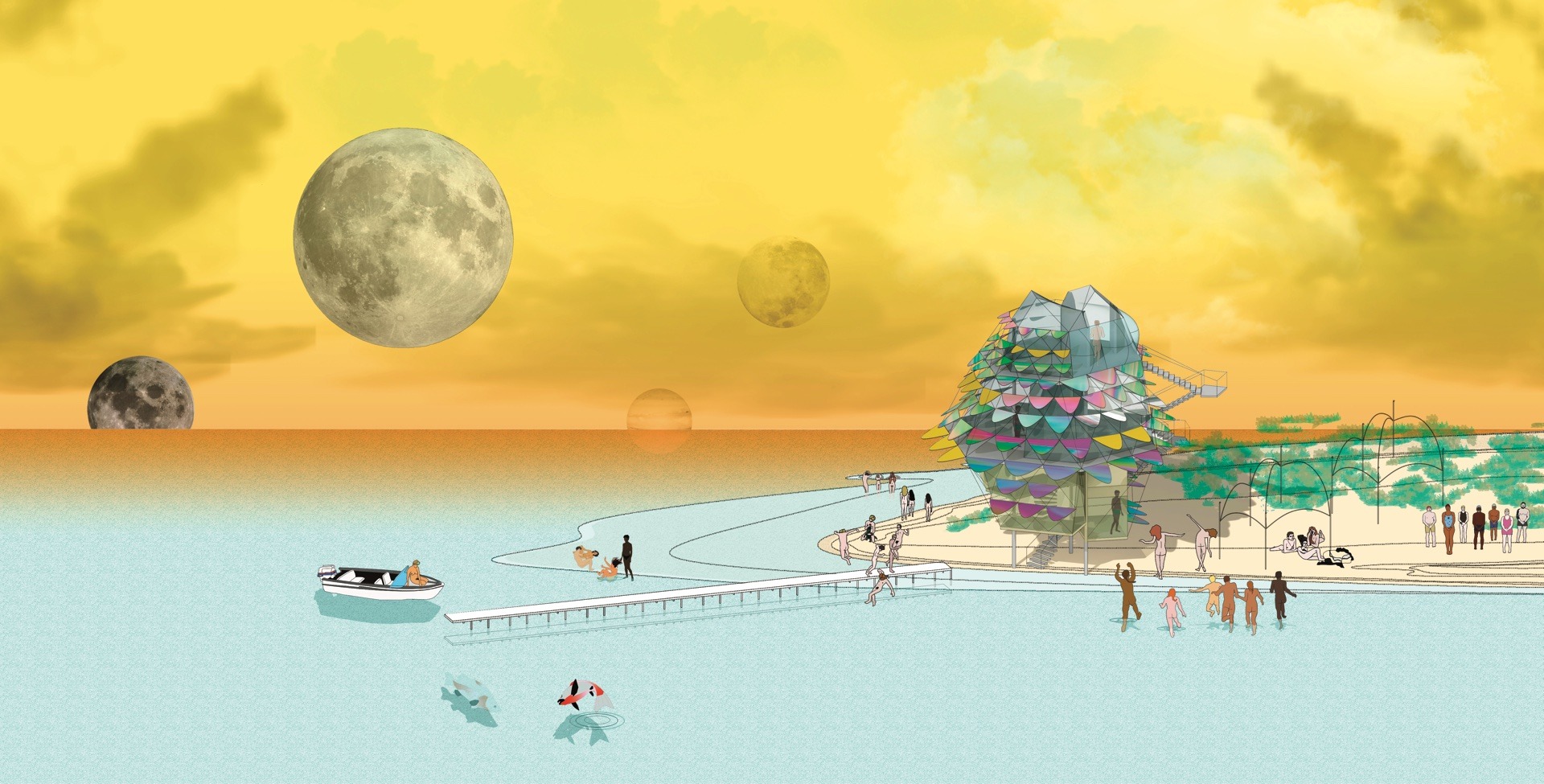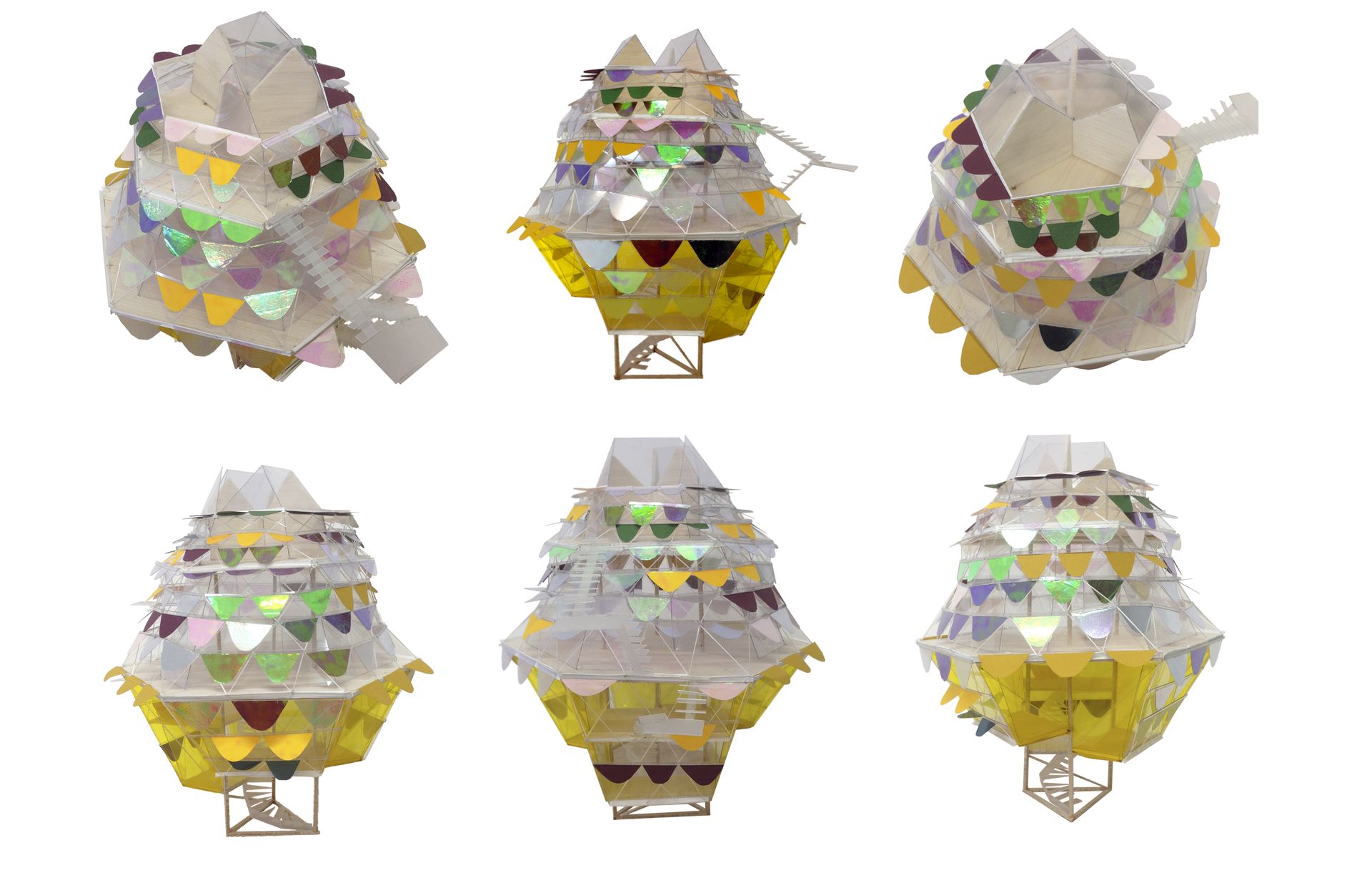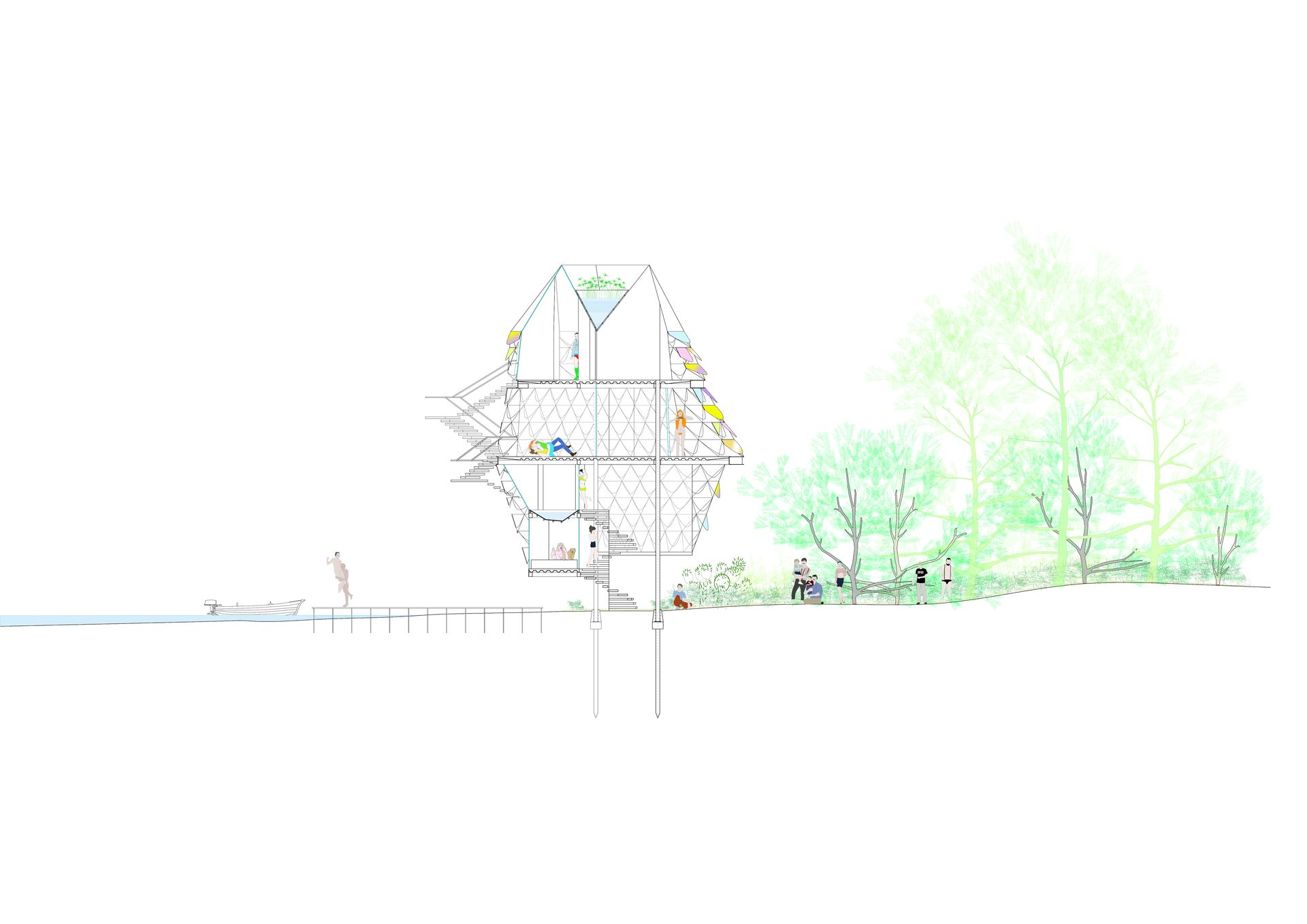About the project
The fifty-island archipelago of Laguna Grande, on the south coast of Texas, is one of the biggest wild island-barriers of the world. This archipelago contains some of the most ancient animal and vegetal species adapted to saline aquatic ecosystems and protects the lagoon from the pollution resulting from the nearby presence of oil platforms. The islands are the habitats where mammals and other coastal species overnight, and they are endangered by the combined effects of climate change and the incremental increase in the acidity of the water.
Island House in Laguna Grande is not designed as an architecture for humans, but built instead to empower the environmental diversity of Laguna Grande. The structure collects and preserves rainwater and, through the mediation of sensors on the ground, sprays water to dilute toxicity and combat drought.
Credits
Andrés Jaque / Office for Political Innovation with Patrick Craine
Team
Roberto González García, Laura Mora, Fabio Andrés Morales, Sebastian Bech-Ravn, Danay Kamdar, Flavio Martella, Jorge Noguera Facuseh, Víctor Nouman, Gustavo Parra Rodríguez.


